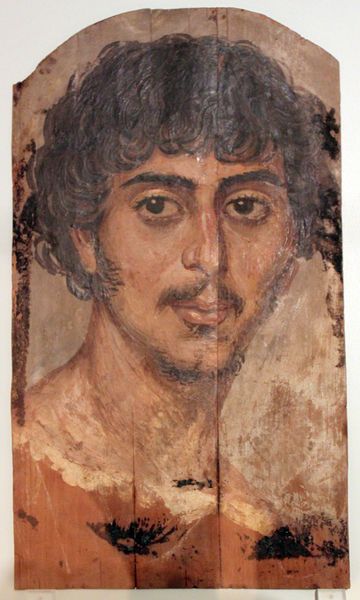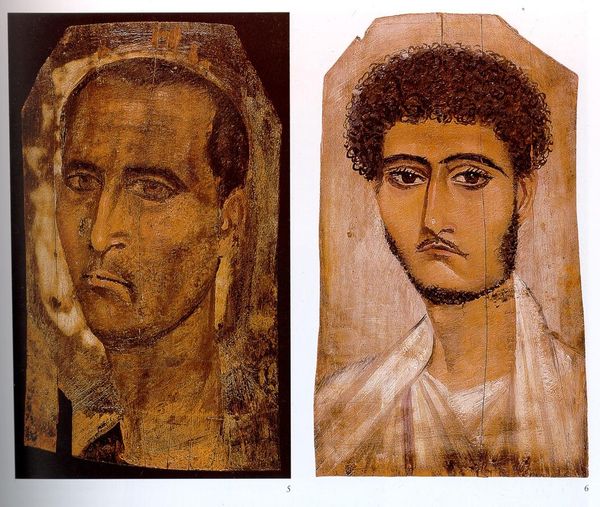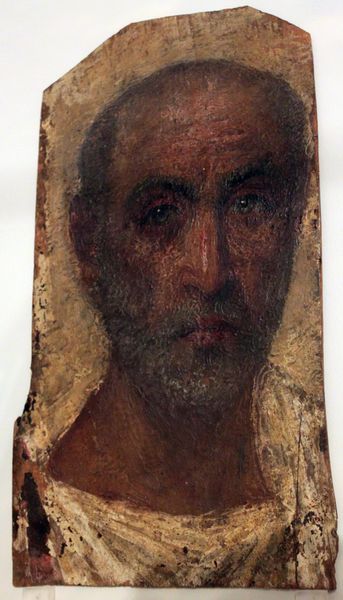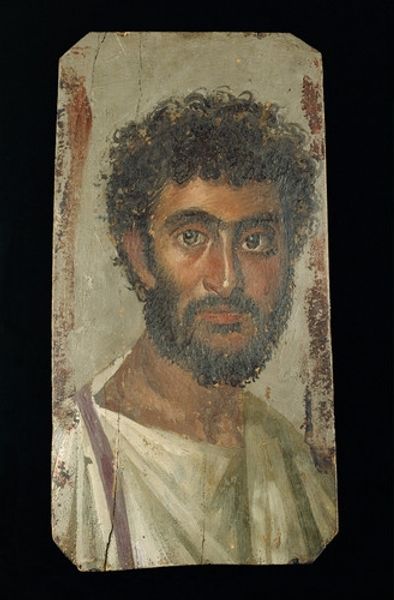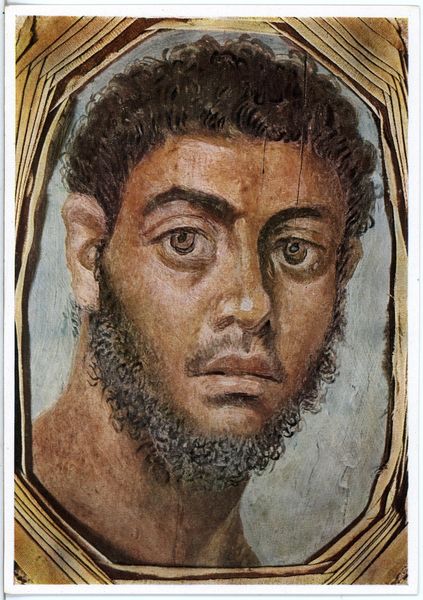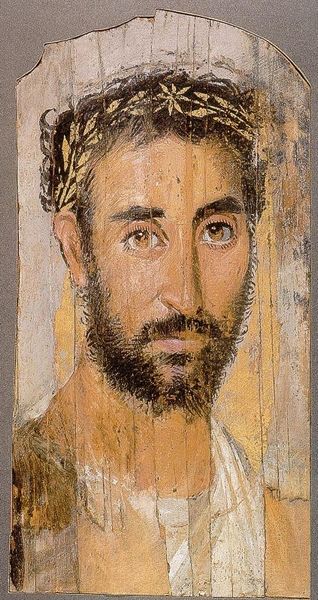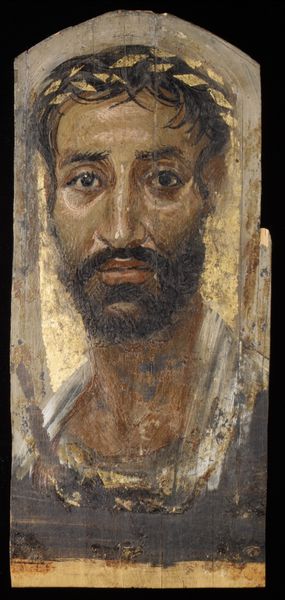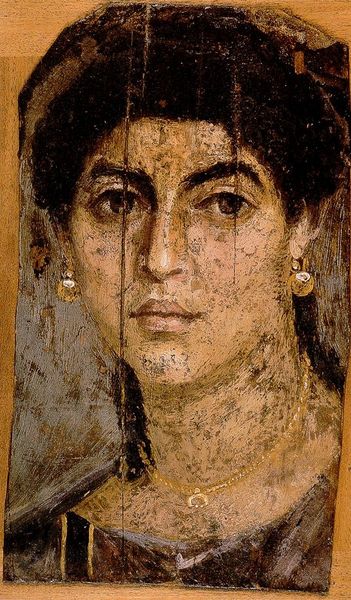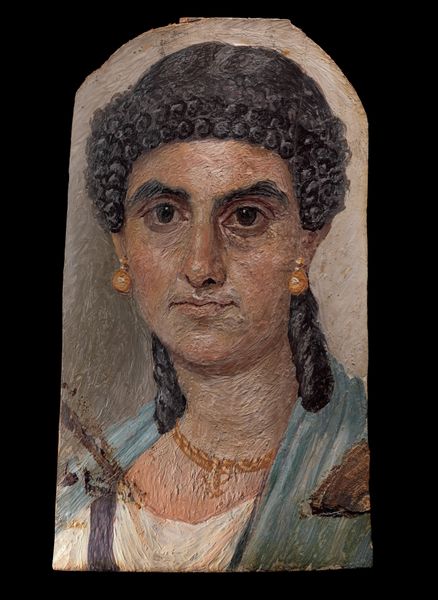
painting, oil-paint
#
portrait
#
head
#
face
#
painting
#
oil-paint
#
ancient-egyptian-art
#
figuration
#
oil painting
#
portrait reference
#
ancient-mediterranean
#
portrait drawing
#
history-painting
#
portrait art
#
realism
Copyright: Public domain
Curator: Here we have one of the famous Fayum Mummy Portraits, examples of which can be found in collections worldwide, including right here in the British Museum. These incredibly lifelike portraits were painted in Roman Egypt and attached to mummies, reflecting a fascinating blend of Egyptian burial practices and Roman artistic styles. Editor: Wow. My first thought is just how hauntingly familiar he looks. I feel like I could pass him on the street today. There's such immediacy in those eyes, a directness that transcends millennia. And the way the paint's been applied – so textural, you can almost feel the artist's hand. Curator: Absolutely. These portraits offer invaluable insights into the diverse population of Roman Egypt and their social stratification. We see the incorporation of Graeco-Roman naturalism within a funerary context, speaking to complex interactions of culture, identity, and afterlife beliefs. This individual would likely have been a member of the elite. Editor: It’s amazing to consider the hands that created this image and the person it depicts. It's like a ghostly echo, a tangible link across time. Did they know that people like us would be gazing at him thousands of years later, wondering about his life? The very medium used – likely encaustic or tempera paint – makes the colours so vivid! It resists the erosion of time itself. Curator: Exactly. This specific portrait, with its fine details and individualized features, is thought to reflect a period of relative economic stability and cultural exchange. One must consider how access to such high-quality materials, like pigments imported from afar, played a critical role in portrait production and speaks to economic power. The question of authorship remains intriguing as these pieces reflect skilled local craftsmanship influenced by global artistic trends. Editor: And the slight asymmetry in his face – a dip in the corner of his mouth, that quizzical raise of an eyebrow! It makes him so palpably human and invites you to imagine the man as an individual, far more so than some generic noble. This artwork’s intimate appeal has truly withstood the ages. Curator: Thinking through postcolonial approaches, the legacy of the Fayum portraits also lies in their ongoing circulation within Western museums and collections. It's critical to acknowledge and address issues related to repatriation, preservation ethics, and the potential decontextualization of cultural heritage. Editor: It gives us a glimpse of a real person staring back, an intersection of worlds that merges life, death, and artistry across time. A very provocative invitation!
Comments
No comments
Be the first to comment and join the conversation on the ultimate creative platform.



